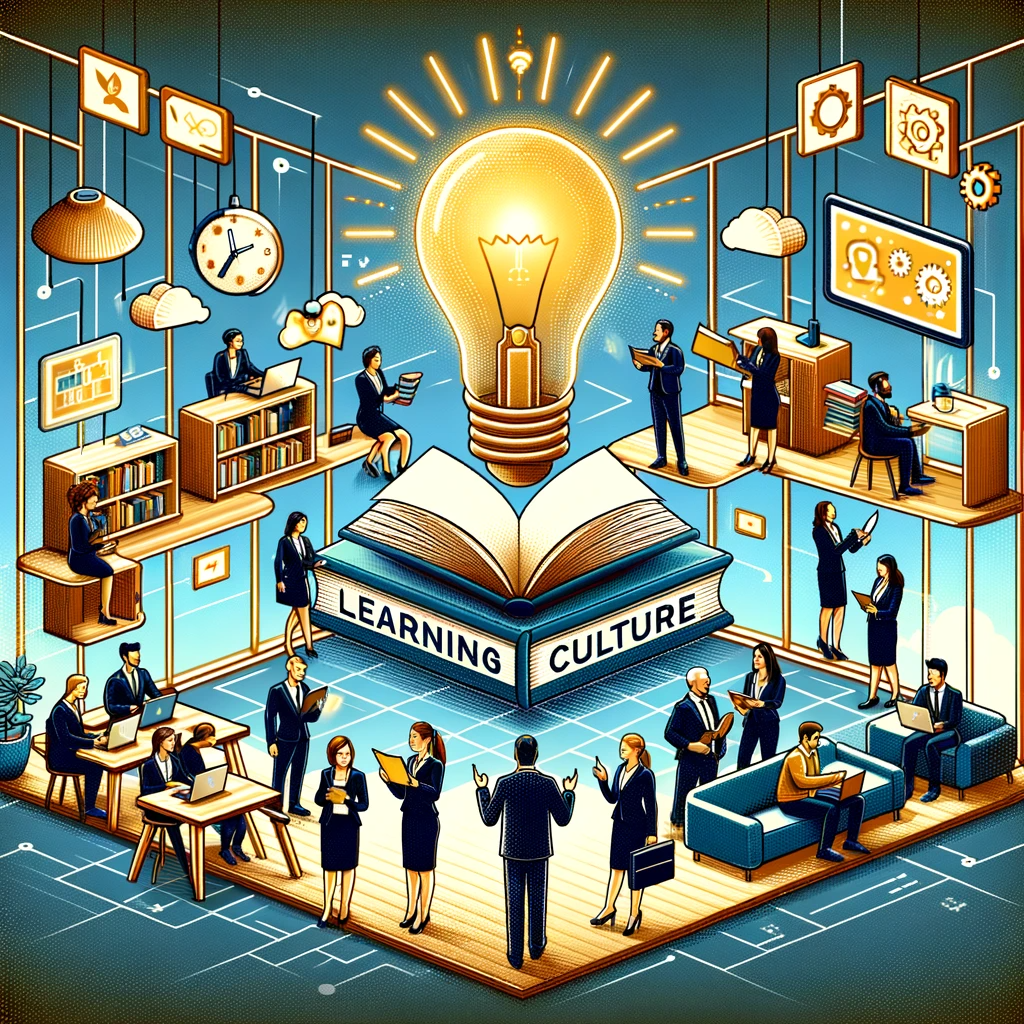Creating an effective learning culture is a common aspiration for many organizations in today’s business world. The speed at which technologies, markets, and industries evolve demands a constant focus on acquiring new knowledge and skills. In this article, we will delve deeply into how to create a truly effective learning culture within your organization, addressing the fundamentals, key strategies, and best practices for fostering a culture of continuous learning.
I. Understanding the Learning Culture
Before embarking on creating an effective learning culture, we must first understand what this culture entails and why it is important.
What is a Learning Culture?
A learning culture is the set of values, beliefs, and practices within an organization that fosters and supports continuous learning. In a learning culture, employees feel an intrinsic motivation to acquire new knowledge and skills, feel supported in their development, and view learning as an integral aspect of their work.
Importance of a Learning Culture
A solid learning culture offers several advantages for organizations, including:
- Innovation: It fosters creativity and the generation of new ideas, driving innovation in products, services, and processes.
- Talent Retention: It attracts and retains employees seeking growth and professional development opportunities within the organization.
- Performance Improvement: As employees acquire new skills and knowledge, overall performance and productivity tend to improve.
- Adaptability: It prepares the organization and its employees to quickly adapt to changes in the business environment.
- Competitiveness: A workforce with updated skills and a learning mindset can help the organization remain competitive.
- Employer Brand Enhancement: An appealing learning culture can attract talented candidates seeking a development-oriented environment.
II. Fundamentals of an Effective Learning Culture
Before diving into specific strategies and practices, it’s important to establish the fundamentals of an effective learning culture. These fundamentals are essential for building a solid foundation that supports continuous learning in your organization:
1.- Committed Leadership
The organization’s leadership must be committed to promoting learning. Leaders should serve as role models, demonstrating their interest in continuous development and allocating resources for learning programs.
2.- Clarity in Objectives
It’s crucial to define clear objectives for organizational learning. This may include developing specific skills, improving performance, or adapting to changes in the market.
3.- Access to Resources
Provide your employees with access to a variety of learning resources. This may include online or in-person courses, resource libraries, on-the-job training, and mentorship.
4.- Fostering Curiosity
Encourage employees to ask questions, explore new ideas, and take risks. Curiosity is a powerful driver for learning.
5.- Support for Experimentation
Promote learning through real-world experimentation. Allow employees space to try out new ideas and approaches, even if they may fail at times.
6.- Knowledge Sharing
Create mechanisms for employees to share their knowledge and experiences. This may include feedback sessions, information-sharing meetings, or online platforms.
7.- Recognition and Rewards
Acknowledge and reward employee learning and achievements. This may include salary increases, promotions, or simply praise and public recognition.
III. Key Strategies for an Effective Learning Culture
Once you have established the fundamentals, you can move forward with creating an effective learning culture. Here are some key strategies to achieve this:
1.- Individualized Development Programs
Develop individualized development programs for each employee. This may include specific training plans and personalized development goals.
2.- Social Learning
Encourage social learning by fostering collaboration and knowledge sharing among colleagues. Communities of practice and learning networks can be helpful.
3.- Experiential Learning
Promote experiential learning by assigning challenging projects and allowing employees to take on broader roles.
4.- Impact Assessment
Measure the impact of learning on performance and organizational outcomes. Use metrics and analytics to assess the effectiveness of learning programs.
5.- Lifelong Learning
Promote a lifelong learning mindset by encouraging employees to seek continuous development opportunities even outside of work.
6.- Technology and Platforms
Utilize technology and online learning platforms to facilitate access to learning resources and track progress.
7.- 360-Degree Assessment
Implement 360-degree assessments to gain comprehensive feedback on employee development and performance.
IV. Overcoming Common Obstacles
Despite the evident benefits of a learning culture, obstacles may arise. Some common obstacles include:
1.- Lack of Time
Employees often feel they don’t have time for learning. Overcome this by integrating learning into daily tasks and allowing flexible schedules for development.
2.- Resistance to Change
Some employees may resist change and continuous learning. Communicate the benefits of learning and demonstrate how it can enhance their careers.
3.- Limited Resources
A lack of resources, such as budget and personnel, can be a challenge. Seek creative solutions, such as collaborating with other organizations or using free online resources.
4.-Lack of Measurement
If you don’t measure learning and its impact, it can be challenging to demonstrate its value. Establish clear metrics and regularly track progress.
V. Conclusion
Creating a truly effective learning culture is an ongoing process that requires commitment and long-term effort. However, the benefits for your organization, including innovation, talent retention, and performance improvement, make the investment worthwhile. By establishing fundamentals, implementing key strategies, and overcoming common obstacles, your organization can build a learning culture that benefits both employees and the organization as a whole. Learning is an invaluable asset that can drive success and resilience in an ever-evolving business world.
If you want to know how we can help you establish an efficient learning culture in your company, you can contact us.

